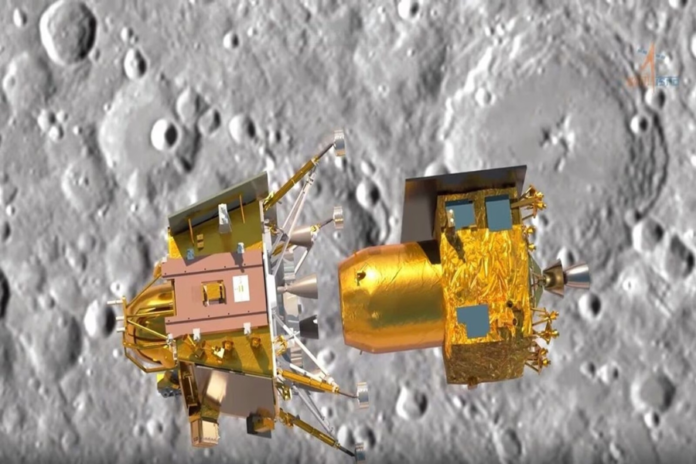The Luna-25 spacecraft crashed onto the moon after spinning out of control while attempting to enter pre-landing orbit, ending Russia’s first moon trip in 47 years and highlighting the post-Soviet downfall of a once-dominant space project.
A malfunction occurred as the Luna-25 was being shifted into pre-landing orbit on Saturday at 11:57 GMT, according to Roskosmos, the state-owned space corporation of Russia. Monday’s landing was supposed to be gentle.
“The apparatus moved into an unpredictable orbit and ceased to exist as a result of a collision with the surface of the Moon,” Roskosmos said in a statement.
A special interdepartmental commission, whose task had given Moscow hope that Russia was rejoining the large power moon race, had been established, according to the report, to look into the circumstances surrounding the loss of the Luna-25 craft.
Russia declining space prowess
The disaster highlighted Russia’s declining space prowess since the height of the Cold War rivalry, when Moscow launched Sputnik 1, the first satellite to orbit the Earth, in 1957, and Soviet cosmonaut Yuri Gagarin became the first person to enter space in 1961.
The $2 trillion economy of Russia is also currently dealing with its biggest external challenge in decades as a result of Western sanctions and the largest land conflict in Europe since World War Two.
Since Luna-24 in 1976, when communist leader Leonid Brezhnev held sway over the Kremlin, Russia had not made an effort at a lunar trip.
After a news item about flames on Tenerife and a 4-minute segment about a professional holiday for Russian pilots and crews, Russian state television placed the story about the loss of Luna-25 at number 8 in its line-up at noon and gave it just 26 seconds of airtime.
Russia has been competing with China and the United States (US), both of which have advanced lunar aspirations, as well as India, whose Chandrayaan-3 spacecraft is expected to touch down on the moon’s south pole this week.
“India’s Chandrayaan-3 is set to land on the moon on August 23,” the Indian Space Research Organisation (ISRO) posted on X, formerly Twitter, around the time news of the Luna crash broke.
The Luna-25 mission was intended to demonstrate to Russian officials that their country can compete in space with superpowers despite its post-Soviet fall and the enormous costs of the Ukraine war.
“The flight control system was a vulnerable area, which had to go through many fixes,” said Anatoly Zak, the creator and publisher of www.RussianSpaceWeb.com which tracks Russian space programmes.
As is customary for the Soviet Union, the United States (US), China, and India, Zak claimed that Russia had likewise chosen to launch a considerably more complex orbital mission before attempting the much more ambitious moon landing.
Russian scientists have frequently lamented the weakening of the space programme due to unscrupulous officials, inept managers who are eager for unattainable vanity space projects, and a degradation in the quality of the country’s post-Soviet scientific education system.
The 2011 Fobos-Grunt mission failure to one of Mars’ moons highlighted the difficulties Russia’s space programme was experiencing more than ten years ago when it could not even leave the earth’s orbit and crashed back to Earth, slamming into the Pacific Ocean in 2012.
Russia ultimately decided to pursue the Luna-25 mission to the south pole of the moon in the early 2010s. Luna-25 did succeed in leaving the orbit of the planet.
However, due to its failure, Russia may not be the first country to sample the frozen water that researchers believe the moon’s south pole contains.
It was unclear right away what kind of long-term effects the failed mission would have on the nation’s lunar project, which calls for a number of more missions in the upcoming years.



